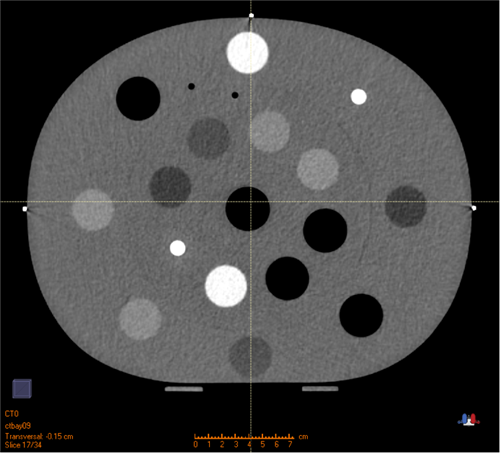
Recently, the team led by Associate Professor Zhong Renming of the Department of Radiotherapy, West China Hospital, employed the gemstone spectral imaging technology of existing CT simulator for simulated positioning, marking the first-time application of the technology in the field of radiotherapy in China.
CT simulation images are the basis of radiotherapy. First of all, the oncologists delineate the areas that need irradiation and the areas that need protection based on the CT simulation images. At the same time, the HU value(or electron density) is the basis for treatment planning system (TPS) to calculate the dose. However, high-density materials (such as metal dentures, titanium alloy joints and prostheses, cardiac pacemakers, stents, etc.) frequently used in clinical work may cause serious artifacts (As shown in Fig. 1, obvious artifacts observed at the left femoral head), which affect the oncologists’ delineation of the target volume and the accuracy of CT values, and become a major problem in radiotherapy.
Gemstone spectral imaging adopt dual energy to complete the homologous, simultaneous and co-directional CT scanning, and reconstruct virtual monochromatic energy images by algorithm, which can obviously reduce artifacts of high-density materials. According to many experiments, the metal artifacts were effectively reduced on images reconstructed by 140KeV, and significantly reduced on images superimposed with the MAR algorithm. Its CT value restoration has achieved the expected effect, and the signal-to-noise ratio of images has also been significantly improved.
The application of this technology can effectively improve the accuracy of the oncologists’ delineation of tumor target volume under the condition of fully identifying high-density substances, while reducing excess irradiation on organs-at-risk (spinal cord, heart, liver, etc.). The treatment plan calculated by the TPS based on the restored HU value shows that the dose for organs-at-risk is lower than the original level, and the target volume can receive a more precise prescribed dose.